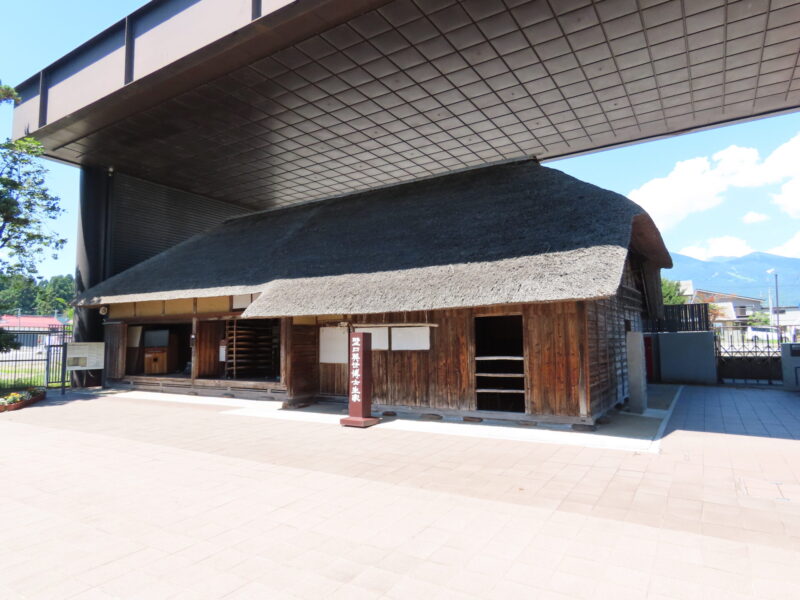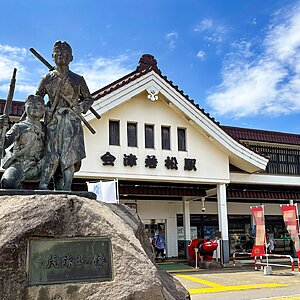
[Inawashiro, Fukushima Prefecture] The elaborate robot at the Hideyo Noguchi Memorial Museum is a hot topic! Have fun learning about great people in history
table of contents
- 1 Actually a fine home
- 2 "Mother Deer's Letter" conveys realistic feelings
- 3 Hideyo Noguchi welcomes you at the "Doctor's Laboratory"
- 4 Get to know the "real Hideyo"
- 5 A day in the life of a doctor as told in American comics
- 6 Have fun learning about difficult topics about bacteria through quizzes and games
- 7 Summary of the Noguchi Hideyo Memorial Museum
Inawashiro Town in Fukushima Prefecture is famous as the town where Hideyo Noguchi grew up. The town is home to the Hideyo Noguchi Memorial Museum, and his birthplace has been preserved exactly as it was at the time
In addition, the museum is full of things to see, such as a reproduction of Hideyo Noguchi's laboratory and the display of his favorite items. Hideyo Noguchi is known in Japan, with his portrait appearing on the 1,000 yen bill
However, there are many people who know only his name and face but know almost nothing about Hideyo, such as what he did to become famous or what kind of person he was
The Hideyo Noguchi Memorial Museum, which we will introduce today, is designed so that even those with no prior knowledge can enjoy the easy-to-understand exhibits
Actually a fine home
Some biographies state that Hideyo Noguchi was born into a poor family, but if you actually see the house he was born into, you'll see that it was too big to be considered poor

Even by eye, it is over 15 meters wide and about 10 meters long. There is also a horse stable, so although it is not a wealthy house, it is by no means poor
Perhaps because the story of rising from a poor family is more prominent, when you actually visit the place you get the impression that the family was not as poor as is often said, but rather above average
The hearth where Hideyo Noguchi fell is also present
In the garden, there is a mulberry tree planted by his mother, Shika. It looks quite old now. The hearth that Hideyo Noguchi fell into when he was one and a half years old, which is often mentioned in biographies, is still there

The burns caused the fingers on one of his hands to fuse together, which caused Hideyo Noguchi to feel inferior, but this incident led him to become interested in medicine
He had become famous around the world for his work, so the fall onto the hearth was a blessing in disguise. Hideyo Noguchi's roots remain intact
A pillar engraved with a strong determination to move to Tokyo
The famous words of Hideyo Noguchi, "If I do not attain my goal, I will never set foot on this land again," are engraved on the alcove pillar. This is often cited as evidence that he was quite determined when he moved to Tokyo

The main pillar and alcove pillar are said to be sacred places that should never be desecrated, even within a house. To have the above words carved into them suggests that an extraordinary determination was required
"Mother Deer's Letter" conveys realistic feelings
After Hideyo Noguchi went to America, he did not return home for a long time. His mother, Shika, was worried and lonely about him, and the original letter she sent to her son is preserved in the museum
Although the handwriting is by no means neat or beautiful, it conveys the mother's true feelings. I would encourage everyone to take a look at the handwritten letter and appreciate the contents along with the typeface that evokes the emotions
At the time, sending a letter from Japan to America was probably not as easy as it is today, but my mother's determination to carry it out is truly impressive, as she was the mother of a great man
Hideyo Noguchi welcomes you at the "Doctor's Laboratory"
Inside the museum, there is a very well-made robot modeled after Hideyo Noguchi in his younger days. In the "Doctor's Laboratory" section, Hideyo Noguchi is sitting at the desk where he actually did his research. His facial expressions move and he speaks using gestures

There are buttons to ask questions of Hideyo Noguchi, such as "Why did you want to become a medical scientist?", "What has been your greatest joy?", and "How do you feel about being on the 1,000 yen bill?" Pressing these buttons will answer your questions
The video below shows him actually speaking. It's very interesting, as it's peppered with answers that give us a glimpse into his personality, including his beliefs
Get to know the "real Hideyo"
"The Real Hideyo" introduces Hideyo Noguchi's diverse hobbies and favorite items. He loved shogi and chess, and often enjoyed them in his spare time

At his villa in Shandeken, a suburb of New York, there was a river running behind it, which he liked because it reminded him of his hometown, Inawashiro, and he sometimes enjoyed fishing there
Hideyo also loved to paint, and left behind a portrait of his wife, Mary. Of course, this painting is also on display, and is very skillfully drawn with a unique touch
Self-portraits and paintings of mother deer are also on display
He also likes new things
Noguchi Hideyo's love of new things is also an essential element when talking about him. At the time, color photography was extremely rare and cutting-edge technology
In 1914 (Taisho 3), he was one of the first to take this color photograph, with himself as the subject. He is wearing a yellow rose on his chest and standing in front of many red roses. You can also see the original photograph
He was also known for his love of fashion, and some of his favorite hats are on display
A day in the life of a doctor as told in American comics
"A Day in the Doctor's Research" chronicles a day in the life of Hideyo, who was working at the Rockefeller Institute for Medical Research at the time. An entire wall is covered in American comic book-style drawings depicting the doctor's day in the life
The book is written in easy-to-understand cartoon illustrations rather than text, making it visually enjoyable. It clearly shows how he arrived at the lab at 8:30 in the morning and worked late into the night, observing animals and bacteria
Have fun learning about difficult topics about bacteria through quizzes and games
"Experience Bacteria!" gives you a deeper understanding of the bacteria that Hideyo Noguchi studied. Quizzes and games are available, making learning fun
Bacteria vary from those that have harmful effects on the body to those that have beneficial effects. Hideyo Noguchi conducted a wide range of research, but his research into pathogenic bacteria, which he risked his life for, has earned him worldwide acclaim
He was even nominated for a Nobel Prize for his research into spirochetes, a pathogenic bacterium. He later discovered spirochetes in patients in Ecuador and developed a vaccine that saved many lives
This corner allows even children to have fun learning about the bacteria that were a factor in Hideyo Noguchi's achievements
Summary of the Noguchi Hideyo Memorial Museum
The Hideyo Noguchi Memorial Museum's appeal lies in the fact that it displays the actual home and many of Hideyo Noguchi's mementos. While the exhibits on this great man can be quite stuffy, there are also quizzes about the Hideyo Noguchi robot and bacteria, making it easy to enjoy

This is a spot that can be enjoyed by a wide range of people, from children to adults. It is the perfect facility to learn about Hideyo Noguchi, a person who is very familiar to Japanese people, through a visual impact rather than through a written biography
Hideyo Noguchi Memorial Hall <Information>
- Name: Hideyo Noguchi Memorial Hall
- Address: 81 Maeda, Mitsuwa, Inawashiro-machi, Yama-gun, Fukushima Prefecture
- Phone number: 0242-65-2319
- Official URL: http://www.noguchihideyo.or.jp/






![[Iwate] Special feature on the highlights of the two major zoos! Morioka City Zoological Park and Iwate Safari Park 69943e83eac371a81ca178fbb1226387_m](https://jp.neft.asia/wp-content/uploads/2017/05/69943e83eac371a81ca178fbb1226387_m-150x150.png)

![[Shizukuishi Town, Iwate Prefecture] Koiwai Farm: Enjoy cows, ice cream, and play! Also featuring the ever-popular, spectacular single cherry blossom! 9cf5f5ba7c88794b4b9829ef38eae13a_m](https://jp.neft.asia/wp-content/uploads/2017/04/9cf5f5ba7c88794b4b9829ef38eae13a_m-150x150.jpg)
![[Miyagi Prefecture Katta District] “Zao Dairy Center” is a dairy farming amusement park! Try your hand at making cheese and sausage sheep](https://jp.neft.asia/wp-content/uploads/2018/03/a904b376d3f083f370e4fdde45dbaaa6_s-150x150.jpg)













